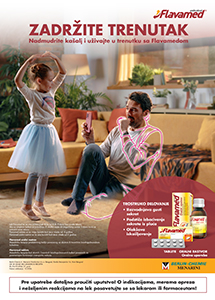THE INFLUENCE OF VARIOUS FACTORS ON THE BREASTFEEDING DURATION IN INDJIJA
Keywords:
breastfeeding, breastfeeding duration, infliencesAbstract
Introduction: Exclusive breastfeeding of infants up to 6 months of age is recommended by the World Health Organization but also other health organizations. The Decree on the National Breastfeeding Support Program in Serbia set the goal, 60% of babies to 6 months of age should have exclusive breastfeeding. The identification of the factors that influence breastfeeding duration across countries may provide useful information, which could be used to improve breastfeeding rates at national levels and worldwide.
The objective of this study was to assess the breastfeeding prevalence and to recognize factors that affect breastfeeding duration.
Methods: This study uses data which were routinely collected during health visits to the pediatrician. In this study, 1089 surveys were processed.
The results of this study showed that is 5.8% never-breastfed infants; 27.8% of newborns were breastfed within the first hour after birth and 69.6% of the newborns within the first 6h; 69.1% babies who were breastfed 3 months, 53.7% babies who were breastfed 6 months, and 28.5% who were breastfed a year and longer.
Conclusion: Factors affecting the breastfeeding rate and breastfeeding duration were hour of first breastfeeding then mother factors like age, level of education, marital status, parity, delivery type, and baby factors like gestational age and birth weight. The Baby Friendly Hospital Initiatives still need to be improved and the maternal and child health counseling should promote exclusive breastfeeding. A set of physiological, nutritional, environmental, socioeconomic, psychological as well as genetic interactions create a list for successfull breastfeeding.
References
The World Health Organization, Report of the Expert Consultation. Geneva, Switzerland: [30 January, 2017]. The optimal duration of exclusive breast feeding. Report reference number: WHO/NHD/01.09. Available from: http://www.who.int/nutrition/publications/infantfeeding/WHO_NHD_01.09/en/
UKEssays. Nutritional Needs and Resources for the Lactating Mother; November 2018.; Available from: https://www.ukessays.com/essays/nutrition/nutritional-needs-and-resources-for-the-lactating-mother.php?vref=1.
Optimizing support for breastfeeding as part of obstetric practice. ACOG Committee Opinion No. 756. American College of Obstetricians and Gynecologists. Obstet Gynecol 2018;132:e187–96. Available: https://www.acog.org/clinical/clinical-guidance/committee-opinion/articles/2018/10/optimizing-support-for-breastfeeding-as-part-of-obstetric-practice
Habibi M, Laamiri FZ, Aguenaou H, Doukkali L, Mrabet M, Barkat A. The impact of maternal socio-demographic characteristics on breastfeeding knowledge and practices: An experience from Casablanca, Morocco. Int J Pediatr Adolesc Med 2018; 5(2): 39–48. doi: 10.1016/j.ijpam.2018.01.003; Available: https://www.ncbi.nlm.nih.gov/pmc/articles/PMC6363246/
Tavoulari EF , Benetou V, Vlastarakos PV, Psaltopoulou T, Chrousos G, Kreatsas G et al. Factors affecting breastfeeding duration in Greece: What is important? World J Clin Pediatr 2016; 5(3): 349–357. Available:https://www.ncbi.nlm.nih.gov/pmc/articles/PMC4978630/
Uredba o Nacionalnom programu podrške dojenju, porodičnoj i razvojnoj nezi novorođenčeta; “Službeni glasnik RS”, br 53 od 11.07.2018.godine, available: http://www.pravno-informacioni-sistem.rs/SlGlasnikPortal/eli/rep/sgrs/vlada/uredba/2018/53/1
Maharlouei N, Pourhaghighi A, Shahraki H, Zohoori D, and Lankarani K. Factors Affecting Exclusive Breastfeeding, Using Adaptive LASSO Regression. Int J Community Based Nurs Midwifery. 2018; 6(3): 260–271. Available: https://www.ncbi.nlm.nih.gov/pmc/articles/PMC6048001/
Sharma IK, Byrne A. Early initiation of breastfeeding: a systematic literature review of factors and barriers in South Asia. Int Breastfeed J 2016; 11 (17). Available: https://doi.org/10.1186/s13006-016-0076-7
Colombo L, Crippa BL, Consonni D et al. Breastfeeding Determinants in Healthy Term Newborns. Nutrients. 2018;10(1):48. 2018 Jan 5. doi:10.3390/nu10010048; Available: https://pubmed.ncbi.nlm.nih.gov/29304013/
Milinco M, Cattaneo A, Macaluso A et al. Prevalence of breastfeeding in a baby-friendly pediatric practice: an experience in Trieste, Italy. Int Breastfeed J 14, 44 (2019). Available: https://internationalbreastfeedingjournal.biomedcentral.com/articles/10.1186/s13006-019-0239-4
Dennis CL. Breastfeeding initiation and duration: a 1990–2000 literature review. J Obstet Gynecol Neonatal Nurs. 2002;31(1):12–32. Available: https://internationalbreastfeedingjournal.biomedcentral.com/articles/10.1186/s13006-019-0239-4
Chen J, Xin T, Gaoshan J et al. The association between work related factors and breastfeeding practices among Chinese working mothers: a mixed-method approach. Int Breastfeed J 14, 28 (2019). Available:https://doi.org/10.1186/s13006-019-0223-z
de Lauzon Guillain B, Thierry X, Bois C, Marie Bournez, Davisse C. Paturet et al. Maternity or parental leave and breastfeeding duration: Results from the ELFE cohort. Maternal and Child Nutrition 2019; Vol 15 (4) Available: https://doi.org/10.1111/mcn.12872
Crossland N,Thomson G,Morgan H, MacLennan G, Campbell M, Dykes F et al; Breast pumps as an incentive for breastfeeding: a mixed methods study of acceptability. Matern Child Nutr. 2016; 12(4): 726–739. doi: 10.1111/mcn.12346; Available: https://www.ncbi.nlm.nih.gov/pmc/articles/PMC5096021/
Chipojola R, Lee GT, Chiu HY, Chang PC, Kuo SY, Determinants of breastfeeding practices among mothers in Malawi: a population-based survey. International Health 2020; vol 12 (2): 132–141, Available: https://doi.org/10.1093/inthealth/ihz034
Hackman NM, Schaefer EW, Beiler JS,. Rose CM, Paul IM, Breastfeeding Outcome Comparison by Parity. Breastfeed Med. 2015; 10(3): 156–162. Available: doi: 10.1089/bfm.2014.0119; available:https://www.ncbi.nlm.nih.gov/pmc/articles/PMC4378341/
Kitano Ni, Nomura K, Kido M, Murakami K, Ohkubo T, Ueno M, Sugimoto M. Combined Effects of Maternal Age and Parity on Successful Initiation of Exclusive Breastfeeding. Preventive Medicine Reports 2015; doi: 10.1016/j.pmedr.2015.12.01; Available: https://www.ncbi.nlm.nih.gov/pmc/articles/PMC4733091/
Kling D, Haile ZT, Francescon J,Chertok I, Association Between Method of Delivery and Exclusive Breastfeeding at Hospital Discharge; The Journal of the American Osteopathic Association. 2016; Vol. 116: 430-439. doi.org/10.7556/jaoa.2016.087; Available: https://jaoa.org/article.aspx?articleid=2531564
Hackman NM, Alligood-Percoco N, Martin A, Zhu J, Kjerulff KH. Reduced Breastfeeding Rates in Firstborn Late Preterm and Early Term Infants. Breastfeed Med 2016; 11(3):119-125. doi:10.1089/bfm.2015.0122; Available: https://www.ncbi.nlm.nih.gov/pmc/articles/PMC4827273/
Campbell A , Miranda P; Breastfeeding Trends Among Very Low Birth Weight, Low Birth Weight, and Normal Birth Weight Infants. J Pediatr 2018 ; 200:71-78. doi: 10.1016/j.jpeds.2018.04.039. Epub 2018 May 18. Available: https://pubmed.ncbi.nlm.nih.gov/29784514/
The World Health Organization, Breastfeeding of low-birth-weight infants; e-Library of Evidence for Nutrition Actions (eLENA); 2019; Available: https://www.who.int/elena/titles/supplementary_feeding/en/
Tahiru R, Agbozo F, Gart Hi, and Abubakari A; Exclusive Breastfeeding and Associated Factors among Mothers with Twins in the Tamale Metropolis; International Journal of Pediatrics 2020; Article ID 5605437; Available:https://doi.org/10.1155/2020/5605437
Theurich MA, Davanzo R, Busck-Rasmussen M, Díaz-Gómez M, Brennan C et al. A Survey of 11 National Breastfeeding Committees and Representatives. Journal of Pediatric Gastroenterology and Nutrition 2019; Vol 68 (3): 400-407. Available: https://europepmc.org /article/med/30562307





